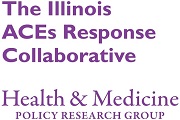The March meeting of the New Jersey Education Association’s ACEs Task Force opened without an agenda.
It was a virtual gathering with more than 50 people—educators, social workers, professionals in pediatrics, juvenile justice and child abuse prevention. The pandemic had landed emphatically close to home, with a governor’s order to close all schools on March 18, and participants were grappling with what that meant for their students, their families and themselves.
So ACEs Task Force co-chair Amanda Adams suggested participants use a “talking piece”—usually a tangible object, but in this case an imaginary one “picked up” and “set down” by each speaker in turn.
“I wanted to hold space for us to come together, to share how we were feeling. It was beautiful. We had a moment of silence. It was a very slow-paced meeting. There was nothing to do that day but check in,” she says.
The ACEs Task Force formed in July 2019 to share knowledge around trauma and its impact, and also to “generate interconnected systems that foster awareness, inspire hope, and create thriving communities.” The March meeting, Adams says, was an example of putting that aim into action.
The NJEA’s focus on trauma and healing began when Adams, an associate director of professional development and instructional issues, heard a presentation about ACEs by Dave Ellis, a national expert on toxic stress and the impact of generational trauma on the well-being of young children. Ellis was one of the first individuals to become a master trainer through ACE Interface, the education and training program launched by Robert Anda, the 1998 ACE study’s co-investigator, and Laura Porter.
Ellis was then based in Minneapolis. “He was coming to New Jersey to keynote conferences,” Adams says. “The feedback was always that people wanted more.” So the educators’ association began inviting Ellis to give ACE presentations in schools across the state.
The next step was for the NJEA to train its own cadre of presenters—teacher-consultants who could then bring knowledge of ACEs, epigenetics and community-building to even more schools.
Ellis urged Adams and her colleagues to push the awareness even further, beyond NJEA. She connected with the Health Federation of Philadelphia, and to other networks and agencies in New Jersey, such as Camden’s Hopeworks, that focus on ACEs, trauma and resilience. She reached out to the state’s pediatrics association, to those working in child abuse prevention and in public health.
At the first meeting of the ACEs Task Force, “the biggest takeaway was that everyone felt relieved to be part of a cross-sector group,” she says. “We can’t have more trauma-informed social workers without having trauma-informed educators. We can’t have trauma-informed courts without having more trauma-informed medical professionals. It’s all connected.”
The task force developed a vision and mission statement; it identified ten priorities, including communication, secondary traumatic stress, equity and policy, and began to form subcommittees.
And this spring, the group offered its first cross-sector training; about 20 members from various sectors became ACE Interface presenters, able to share knowledge and strategies with colleagues in their own realms.
Adams would like to see the task force become an agent for policy change—perhaps working through the education association’s local bargaining units, with teachers advocating for nurses and counselors in every building or for a trauma-informed reboot of discipline practices.
She also knows that the ACEs Task Force, in order to have impact and prevent the generational transmission of trauma, must involve parents and caregivers. “Right now, professionals are centered in this work. How do we connect the community in a way that will center them in this work?”
Adams notes the recent appointment of Ellis, the NJEA’s ACEs mentor, to direct a new Office of Resilience—the first such office of its kind in the country—housed at the state’s Department of Children and Families. Ellis’s position is supported by funders from the New Jersey ACEs Collaborative: The Burke Foundation, The Nicholson Foundation and the Turrell Fund. His charge is to lead a public-private collaborative (government departments, non-profit agencies and those foundations) toward a comprehensive plan for New Jersey to become “trauma-informed and healing-centered.”
Adams is part of a team designing New Jersey’s ACEsConnection page, and she will continue to work with Ellis and the statewide collaborative. She knows that deep change requires shifting both policy and mindsets—challenging the reciprocal shame-and-blame that sometimes happens between schools and families.
“We, as educators, have to start thinking differently not just about our students but about our families…have we asked parents what they need? Have we asked them about their hopes and dreams?
“There are small wins,” she says. “ACEs awareness is building. Professionals are starting to come together. It is a state-level initiative now. The one thing that’s clear is that nobody’s been able to do this work alone.”
Anndee Hochman is a journalist and author whose work appears regularly in The Philadelphia Inquirer, Broad Street Review and in other print and online venues. She teaches poetry and creative non-fiction in schools, senior centers, detention facilities and at writers' conferences.
This article originally appeared on Mobilizing Action for Resilient Communities (MARC) on September 1, 2020. MARC provides tools and inspiration—by networks, for networks—using the science of ACEs to build a just, healthy and resilient world. Visit MARC.HealthFederation.org for more.
Title image: NJEA ACEs Task Force logo used with permission.

Comments (0)